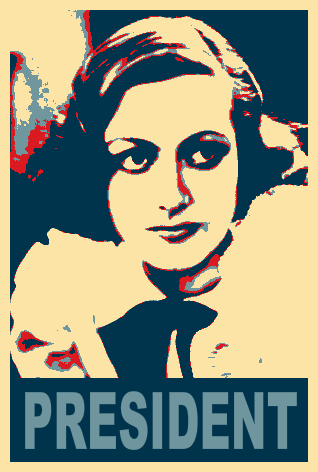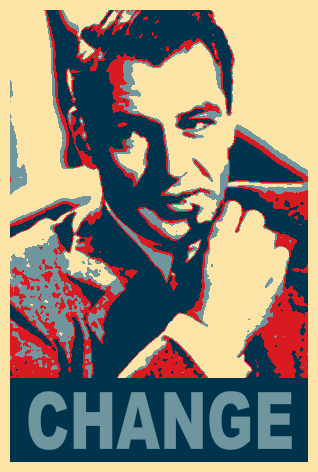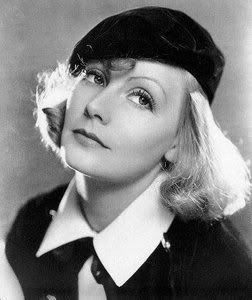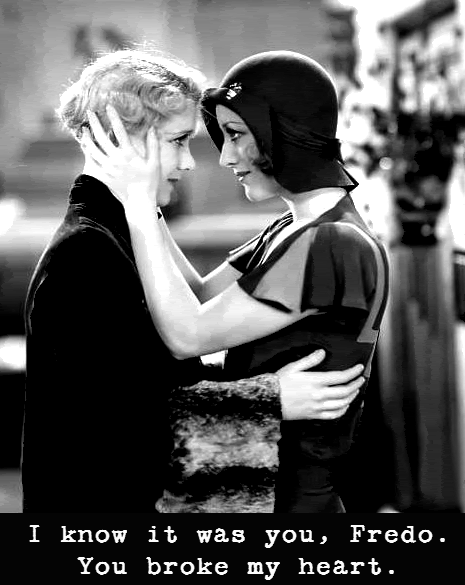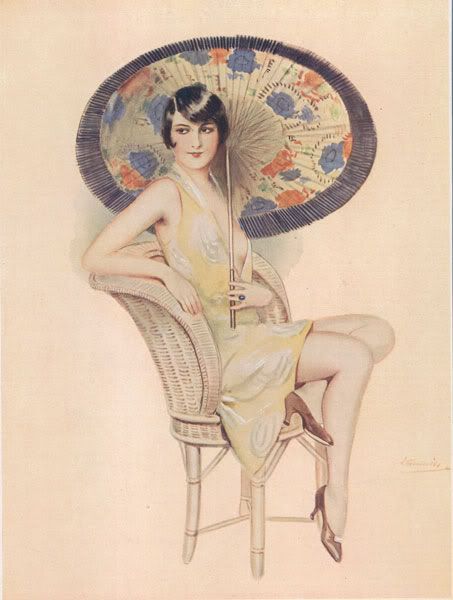 When last we met, Warner Bros. had unleashed a series of highly successful musical films over the course of 1933. Metro-Goldwyn-Mayer, meanwhile, had not attempted a major musical since 1930; The March of Time (which was scrapped before production was complete) and Lord Byron of Broadway (which bombed at the box office) were both produced that year. With hostilities reopened on the musical front, MGM needed to hit back in a major way. To that end MGM released Dancing Lady in November of 1933. The picture was a hit at the box office, and proved to be just the counter-stroke that MGM needed--the Operation Uranus to Warner Bros. Case Blue, if you will (is that a dense enough metaphor for you?).
When last we met, Warner Bros. had unleashed a series of highly successful musical films over the course of 1933. Metro-Goldwyn-Mayer, meanwhile, had not attempted a major musical since 1930; The March of Time (which was scrapped before production was complete) and Lord Byron of Broadway (which bombed at the box office) were both produced that year. With hostilities reopened on the musical front, MGM needed to hit back in a major way. To that end MGM released Dancing Lady in November of 1933. The picture was a hit at the box office, and proved to be just the counter-stroke that MGM needed--the Operation Uranus to Warner Bros. Case Blue, if you will (is that a dense enough metaphor for you?).Dancing Lady is the story of Janie Barlow (played by Joan Crawford), a burlesque showgirl who decides to have a go at legitimate theater after her previous show is broken up by the police. She is bailed out by Tod Newton (Franchot Tone), one of those Park Avenue types you hear so much about, and who clearly fancies Janie (and who can blame him?). Janie attempts to get the attention of veteran Broadway director Patch Gallagher (Clark Gable), but to no avail. Tod again helps Janie out by agreeing to finance Patch's production on the condition that Janie be given a place in the show. A typical Joan Crawford love triangle ensues (along with a few plot points that I, to be perfectly honest, don't feel like recounting), but after all the sound and fury Janie ultimately winds up as the leading lady. By the way, does that sound familiar?
For a variety of reasons, I enjoyed Dancing Lady, perhaps more than a sane person ought to. The most obvious reason is none other than Joan Crawford herself, who (aside from being stunningly gorgeous) is fantastic throughout the whole picture. Indeed, Dancing Lady is almost a biographical sketch of Joan, who--like her character--rose from the rank of a mere chorus girl to a top-tier starlet. Though her singing voice may leave something to be desired, Joan dances well enough and is quite endearing as a comedienne. If 42nd Street was Ruby Keeler's ticket to stardom, Dancing Lady cemented Joan's position in the Hollywood firmament; so great was her success in the picture that Dancing Lady remained a de facto measuring stick for her subsequent roles at MGM.
Now that I have sufficiently fawned over Joan Crawford, let us consider a few of the other players in the film. Dancing Lady was the fourth film in which Clark Gable played Joan's leading man (they ultimately made eight films together). In this picture, Clark Gable is... well, Clark Gable. He does what he always does, and does it as well as he always does. Franchot Tone makes quite a good Park Avenue chap, perhaps because he was one off the screen as well as on. Ted Healy and his stooges--the Moe, Larry and Curly of legend--also make an appearance as stage hands, still at the beginning of their Hollywood careers at this point. At the same time, this picture was one of the last appearances of Winnie Lightner, who appeared in several early talkies at Warner Bros. before attempting (unsucessfully, sadly) to freelance. Finally--and perhaps most interestingly--Dancing Lady marks the film debut of Fred Astaire, who serves as Joan's dance partner in the picture's musical finale.
Ironically, neither Fred Astaire nor the Stooges would stay with MGM for long after Dancing Lady. The Stooges made a few shorts at MGM before moving on to greater fortunes at Columbia. Fred Astaire, meanwhile, was under contract to RKO Pictures and had been loaned out to MGM for Dancing Lady. Had the studio heads at MGM forseen the kind of success these two short-timers would have down the road, they no doubt would have forked over heaps of money to keep them in the MGM stable of stars. It is quite a twist of fate that Dancing Lady was produced by David O. Selznick, who had signed Fred Astaire to RKO before returning to produce pictures at MGM in the stead of an ailing Irving Thalberg (come on, you think this shit is interesting, too!).
For all the hits MGM and Warner Bros. rolled out that year, the battle for musical supremacy was hardly decided in 1933. Warner Bros. produced a series of Gold Diggers pictures, with installments in 1935, 1936 and 1938*. Not to be outdone, MGM produced the Broadway Melody series, with iterations in 1935, 1937 and 1940*. Picking a winner is largely a subjective matter, but two important factors must be considered. First of all, MGM managed to remain profitable throughout the Depression while Warner Bros. (not to mention the rest of Hollywood) failed to do so. Second, MGM continued to crank out musicals during the 1940s and 1950s, giving rise to the likes of Gene Kelly. Ultimately, it seems that MGM was victorious on the musical front, and Dancing Lady was doubtless a considerable factor in that victory.
*Note that I am going by the year the films were produced, not by the years in the title.


